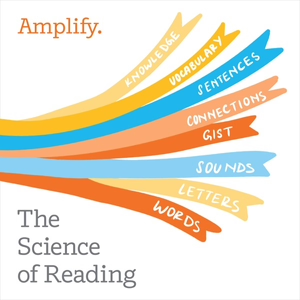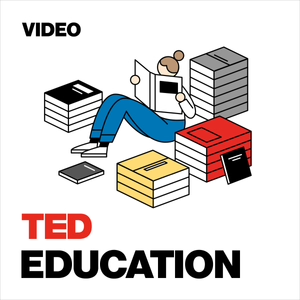
S1-12. Neuroscience and early literacy: Dr. Bruce McCandliss
03/18/20 • 48 min
1 Listener
Susan and Dr. Bruce McCandliss, a professor in the Graduate School of Education at Stanford University, chat about combining neuroscience with education. How does neuroscience help us understand the changes going on in the brain of a child learning to read? Why do some children struggle so profoundly? He shares his research into focusing the student’s attention on letters and sounds versus on the word as a whole.
Quotes:
“Teachers play a huge role in shaping brain development for reading.”
“This is where education and neuroscience are coming together to create a dialogue in the space of how we support children.”
Resources:
- Bringing Words to Life, Second Edition: Robust Vocabulary Instruction by Isabel Beck
- Where Is Educational Neuroscience? by John T. Bruer, PhD
- 2019 Education Trends by Carrie Gajowski, MA
- Minds, Brains, and Learning: Understanding the Psychological and Educational Relevance of Neuroscientific Research by James P. Byrnes
- Podcast discussion guide
- Want to discuss the episode? Join our Facebook group Science of Reading: The Community.
Episode timestamps*
02:00: Introduction: Who is Bruce McCandless?
02:00: Bruce's Journey into Early Literacy and Neuroscience
05:00: Cognitive Science vs. Neuroscience
07:00: Educational Neuroscience and Brain Development
22:00: The Role of Teachers in Shaping Brain Development
39:00: Future Directions in Educational Neuroscience
45:00: Conclusion and Takeaways
*Timestamps are approximate, rounded to nearest minute
Susan and Dr. Bruce McCandliss, a professor in the Graduate School of Education at Stanford University, chat about combining neuroscience with education. How does neuroscience help us understand the changes going on in the brain of a child learning to read? Why do some children struggle so profoundly? He shares his research into focusing the student’s attention on letters and sounds versus on the word as a whole.
Quotes:
“Teachers play a huge role in shaping brain development for reading.”
“This is where education and neuroscience are coming together to create a dialogue in the space of how we support children.”
Resources:
- Bringing Words to Life, Second Edition: Robust Vocabulary Instruction by Isabel Beck
- Where Is Educational Neuroscience? by John T. Bruer, PhD
- 2019 Education Trends by Carrie Gajowski, MA
- Minds, Brains, and Learning: Understanding the Psychological and Educational Relevance of Neuroscientific Research by James P. Byrnes
- Podcast discussion guide
- Want to discuss the episode? Join our Facebook group Science of Reading: The Community.
Episode timestamps*
02:00: Introduction: Who is Bruce McCandless?
02:00: Bruce's Journey into Early Literacy and Neuroscience
05:00: Cognitive Science vs. Neuroscience
07:00: Educational Neuroscience and Brain Development
22:00: The Role of Teachers in Shaping Brain Development
39:00: Future Directions in Educational Neuroscience
45:00: Conclusion and Takeaways
*Timestamps are approximate, rounded to nearest minute
Previous Episode

11. A conversation with Jasmine Lane
Next Episode

S1-13. Science of Reading Special Episode: Remote Learning
We’ve been thinking a lot about you -- and our hearts go out to you during this confusing and uncertain time. Helping our students continue to learn in this unusual and unsettling situation is not easy. And here at the Science of Reading podcast, we want to do what we can to support you where we can.
Resources
Science of Reading: The Podcast
Science of Reading: The Facebook Community
If you like this episode you’ll love
Episode Comments
Generate a badge
Get a badge for your website that links back to this episode
<a href="https://goodpods.com/podcasts/science-of-reading-the-podcast-25333/s1-12-neuroscience-and-early-literacy-dr-bruce-mccandliss-13249351"> <img src="https://storage.googleapis.com/goodpods-images-bucket/badges/generic-badge-1.svg" alt="listen to s1-12. neuroscience and early literacy: dr. bruce mccandliss on goodpods" style="width: 225px" /> </a>
Copy



